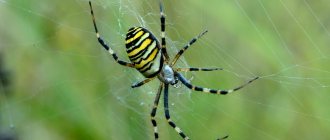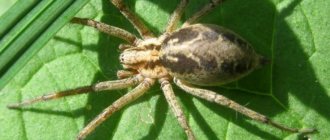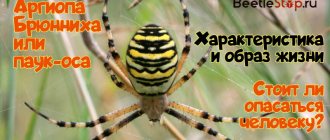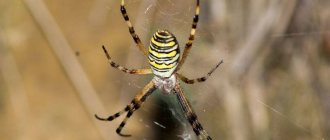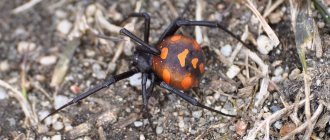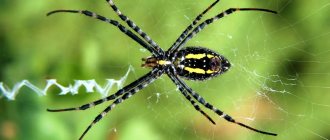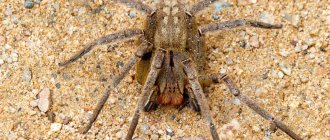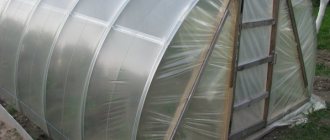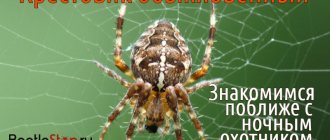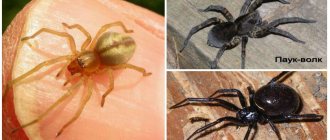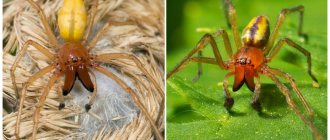Spiders usually evoke either subconscious horror or disgust in most people. Arachnophobia, oddly enough, is common to many people. Theoretically, because spiders are poisonous. But! Of the several thousand of their poisonous varieties, at most one and a half hundred are scraped together, the rest are safe for people. The second explanation is the disgusting appearance. However, the most dangerous spider, the tarantula, resembles a plush toy. And his small fellow tribesman, Argiope Brünnich, generally has an elegant, almost festive appearance. So arachnophobia is something irrational, and spiders themselves are worthy of attention and interest, like any other work of nature.
Argiope's appearance
Even fierce opponents of arachnids find the Argiope Brünnich spider beautiful. It is more popularly known by other names: wasp spider, tiger spider, and less commonly, zebra spider. And all thanks to the bright, original, memorable coloring. While fully consistent with a spider's physique, the animal has a characteristic wasp (or tiger) coloring: yellow and black stripes. If you look closely, they are interspersed with white lines, but from a distance the coloring completely matches that of wasps. The spider's legs are also ringed with contrasting stripes, creating a clear impression that they are wearing stockings. Clearly on the fourth stripe, if you count from the cephalothorax, there are two noticeable tubercles, and along the edges of the abdomen there are notches (always six, but colored differently: shades vary from inexpressively dark to bright orange).
The arrangement of the limbs of the wasp spider is also non-standard. Two pairs are oriented strictly forward, the remaining two are oriented strictly backward. Visually, there are no lateral supports, which is not typical for most arachnids, in which the legs are located perpendicular to the surface.
Argiope Brünnich cannot boast of impressive size. Males never exceed seven millimeters in “height” - most people will not notice them, especially since their coloring is rather dull. Females will be larger: they can reach 2.5 centimeters, distinguished by bright colors that are noticeable from afar.
Nutrition
The tiger spider weaves large trapping nets that have a complex beautiful pattern and small cells. The spider waits for its prey in their very center.
In this case, the first two pairs of legs are directed forward, and the third and fourth pairs are directed back. Thus, visually, the spider’s body takes the shape of the letter X. The spider does not have very good eyesight, but it perfectly feels the vibrations of the air and the web.
Argiopes mainly feed:
- grasshoppers;
- crickets;
- locusts;
- mosquitoes;
- flies.
But often other insects get caught in the net, which the spider is not averse to snacking on. As soon as the prey falls into the trap, the spider senses the vibration and rushes towards the victim.
The spider attacks the insect, bites and injects poison under the chitinous layer. For some time the predator watches the prey from a distance. As soon as the insect stops moving, the argiope wraps the victim in a web.
The spider bites through the threads holding the prey. He lowers the victim to the ground to feast on it in a secluded place or hide it in reserve. One Argiope prey can last for a week.
Argiopes, like other spiders, have external digestion. The arthropod's venom promotes the decomposition of the insect's entrails. Some time after the bite, the spider returns to its prey. It sucks out all the insides of the insect, leaving only the chitinous layer.
Sometimes the argiope itself becomes a victim if a wasp or too large beetle gets caught in its net. The spider tries to escape, but sometimes it can be caught by its own victim or pierced by the poisonous sting of a wasp.
How do these spiders live?
The range that the Argiope Brünnich spider has confidently mastered is quite wide. It includes many countries of Europe, the south (and, more recently, the middle zone) of Russia, Crimea, northern Africa, South Asian territories, Japan and China. These spiders settle in meadows, along the sides of even fairly busy roads, on forest edges, and in the beds of dry rivers. Argiope is a hunting spider; It does not hunt from ambush, but waits for prey in nets. The basis of its diet are grasshoppers, flies, fillies and wasps.
Lifestyle
Representatives of this species prefer to live in small groups of 20 individuals each. They live in fields and meadows, in forest areas, as well as in other places with dense vegetation. At the same time, they choose open areas that are well translucent and warmed by the sun's rays.
To build a web, these insects choose a large spreading plant or build it between several bushes. It takes a spider about an hour to make one trapping net, and the construction process itself always occurs at dusk. The central part of the web consists of a stabilimentum - a pair of clearly visible threads located opposite each other, which diverge from the middle.
This is interesting! The web of argiope bruennichi has the ability to reflect ultraviolet rays and this is quite good at attracting insects!
The finished fishing net is very beautiful - it has small cells arranged in a zigzag pattern. And at its center there is always a wasp-like spider. The mistress sits on the underside of the web, spreading her long legs wide apart, and patiently waits for the next victim to fall into the trap.
The basis of the wasp spider's diet consists of insects, both orthoptera and others. Most often, the following networks fall into the placed networks:
The victim caught in the web begins to twitch, which attracts a hunter located nearby. The spider immediately approaches, plunges its jaws into the body of the prey and paralyzes the caught insect with poison. As soon as the prey freezes, the hunter deftly wraps it in a web, bites off the restraining threads and hides it in a secluded place.
After some time, the poison, which contains digestive enzymes, softens the victim’s body, after which the spider begins to eat.
The female becomes sexually mature immediately after molting. She sheds her old chitinous cover and allows the male to fertilize her, after which she eats him.
On a note! Scientists still cannot come to a consensus as to why she does this. Some believe that in this way she is trying to saturate her body with protein, which is necessary for normal gestation of eggs. Others believe that a natural reflex is triggered - the female eats the male due to incompatibility in size, that is, it acts on the principle of natural selection, when large individuals destroy small ones!
A female spider with a color like a wasp lays eggs about a month after mating. She weaves several cocoons from the web and places approximately 400 eggs in each. She hangs all the cocoons near her fishing net and soon dies.
Future offspring spend the entire winter in a dense, warm cocoon. With the arrival of warmth, the young emerge from the eggs and spend some time in close proximity to the cocoon. During this period, many spiderlings die and there is only one reason for this - overpopulation of the territory, due to which there is not enough food for everyone. Thus, some packs die due to hunger, others are eaten by their own brothers.
The survivors leave their homes around August. In windy weather, they scatter around the surrounding area using their web. In the fall, the young reach sexual maturity.
Skilled braiders
Like all web spiders, Argiope Brünnich prepares traps stretched between blades of grass and low branches of bushes. The networks of this species of arachnids are circular, in the center they have a zigzag-like pattern, characteristic of the weaving of all brothers in the genus Argiope and called stabilimentum. Despite the small size of the hunter, his traps are very durable, capable of holding a grasshopper, which is 2-3 times larger than the predator. Argiope Brünnich spends only an hour creating nets that are woven at sunset, in the approaching twilight.
The character and lifestyle of agriope
Representatives of the species Argiope brunnich usually gather in small colonies (no more than 20 individuals) and lead a terrestrial lifestyle. The net is secured between several stems or blades of grass.
In the photo the spider Argiope bruennicha
Argiope is an orb -weaving spider. His networks are distinguished by a very beautiful, even pattern and small cells. Having placed its trap, the spider sits comfortably in its lower part and waits patiently for the prey to come into its possession.
If the spider senses danger, it will immediately leave the trap and descend to the ground. There, the argiope is located belly up, hiding the cephalothorax if possible. However, in some cases, the spider may try to ward off danger by starting to swing its web. Thick threads of the stabilimentum reflect light, which merges into a bright spot of unknown origin to the enemy.
Argiope has a calm character; when you see this spider in the wild, you can examine it at a fairly close distance and photograph it; it is not afraid of humans. During morning and evening twilight, as well as at night, when it is cool outside, the spider becomes lethargic and inactive.
Spider Hunting Rules
For an argiope waiting for prey, it is not enough to simply weave a net. The owner of the trap sits in its center, in that very zigzag segment, and waits for the victim, holding a skein of created threads in his limbs. When the prey is caught, the hunter entangles it in a web and bites it. The insect dies from the poison; at the same time, it begins to be partially digested, while not yet in the spider’s mandibles.
Benefit
As mentioned earlier, spiders do virtually no harm. It is, of course, unpleasant to be neighbors with them, but nothing more. There is one positive quality - they hunt other insects.
An adult can eat more than its own weight in food per day. If you have ants, cockroaches or flies in your home, the spider population will grow rapidly until they rid your home of other insects.
Sad breeding
Spiders of the species Argiope Brünnich deal with the issue of leaving offspring during the molting period, when the female has already shed the previous chitin, but has not yet acquired new ones. After the male has done his job, the female in the vast majority of cases eats him. Sometimes the “brave fellow” manages to impregnate the second lady, but, according to scientists, not a single one lived to see the third approach. There is a theory that the cannibalism of spiders is caused by a lack of protein necessary for the development of heirs. However, you shouldn’t sympathize too much with their “men”: the female Argiope does not survive her “husband” for long. After creating cocoons and laying eggs in them (up to 400 eggs in each “little jar”), the wasp spider dies. The offspring spend the winter in the houses she created, and in the spring they emerge from them completely independently.
Lifestyle
Representatives of this species prefer to live in small groups of 20 individuals each. They live in fields and meadows, in forest areas, as well as in other places with dense vegetation. At the same time, they choose open areas that are well translucent and warmed by the sun's rays.
To build a web, these insects choose a large spreading plant or build it between several bushes. It takes a spider about an hour to make one trapping net, and the construction process itself always occurs at dusk. The central part of the web consists of a stabilimentum - a pair of clearly visible threads located opposite each other, which diverge from the middle.
This is interesting! The web of argiope bruennichi has the ability to reflect ultraviolet rays and this is quite good at attracting insects!
The finished fishing net is very beautiful - it has small cells arranged in a zigzag pattern. And at its center there is always a wasp-like spider. The mistress sits on the underside of the web, spreading her long legs wide apart, and patiently waits for the next victim to fall into the trap.
Nutrition
The basis of the wasp spider's diet consists of insects, both orthoptera and others. Most often, the following networks fall into the placed networks:
The victim caught in the web begins to twitch, which attracts a hunter located nearby. The spider immediately approaches, plunges its jaws into the body of the prey and paralyzes the caught insect with poison. As soon as the prey freezes, the hunter deftly wraps it in a web, bites off the restraining threads and hides it in a secluded place.
After some time, the poison, which contains digestive enzymes, softens the victim’s body, after which the spider begins to eat.
Argiope Brünnich spider: poisonous or not?
The question of the potential danger of the entire crawling brethren worries people in the first place. Argiope Brünnich did not escape a similar fate. Whether this species of spider is poisonous or not is incorrect to ask. Strictly speaking, all arachnids are poisonous; another thing is that not all representatives of the species are able to bite through the skin enough for their poison to reach at least the capillaries. So, even without conducting laboratory tests, we can say with confidence that Argiope Brünnich is a poisonous insect. In the end, it is with poison that she “pacifies” her victims. And it is fatal to insects. Another thing is the person. Its dimensions are not comparable to those of Argiope Brünnich. The bite of this spider is therefore relatively harmless to humans. It can be compared to being stung by a wasp (the spider lives up to its middle name). The sensation is quite painful, and swelling and itching may subsequently occur, but an argiope bite does not pose any danger. Only an allergic person can suffer from it. But the same troubles will be brought to him by the bite of any insect, even a mosquito.
Is a bite dangerous to human health?
Argiope brunnich is not capable of causing serious harm to a person, much less killing. In general, this spider is not aggressive, and therefore will not just attack a person. It’s another matter if you disturb it, for example, by picking it up.
In such a situation, the animal will perceive you as a threat and will try to defend itself. As a result of a bite, a slight swelling in the form of mild edema may form on the body, and mild pain, itching, and tingling may also be observed.
Important! The bite site should be cauterized as quickly as possible using a match. As a result of a thermal attack, the poison is destroyed and loses its properties. Also, the bite site should be treated with an antibacterial substance and, if possible, take an antiallergic drug.
Appearance
The body is divided into the abdomen and cephalothorax, which are connected to each other by a thin stalk. The cephalothorax is covered with a durable chitinous layer that protects it from mechanical damage.
Inside it is the brain and stomach. 4 pairs of walking legs, a pair of pedipalps and a pair of chelicerae extend from it. The limbs are thin and long. They help the spider deftly move along the shaky threads of the web. The pedipalps are used for touching and grasping prey.
The spider has 8 eyes, which are located on the front of the cephalothorax. One pair is especially large, located on top. Others are smaller, located in front and to the side of the largest pair.
There are also chelicerae that end in sharp curved fangs. Venom glands approach the fangs. On the last pair of legs there are special appendages, which consist of a layer of bristles.
They are used for weaving multilayer networks with complex patterns. With their help, the spider arranges its webs into the patterns it needs. This is a characteristic feature of all orb weavers. At the back of the lower part of the abdomen there are arachnoid appendages.
The tiger spider is famous for its strong sexual dimorphism. The body of females reaches 1.5 cm in length, males rarely grow more than 5 mm. The female's paw span can reach 4 cm.
Females boast a brighter color, which is designed to indicate the poisonousness of the spider and scare away predators. The abdomen is black with yellow stripes, sometimes white stripes can be seen on it. The fourth dark stripe from the cephalothorax has two wavy bends.
The coloring resembles that of a wasp. The abdomen is round in shape and has 4 concave sections. The cephalothorax is covered with gray hairs that shimmer in the light. The legs are long, black with yellow stripes. The pedipalps are long and light colored.
Males have an elongated long abdomen. The body is light brown in color. On the back, against a light background, two parallel dark stripes are visible.
On the long legs you can see sparse black bristles. At the ends of the pedipalps there are small thickenings - bulbs. The male does not at all resemble a wasp in appearance, so its species affiliation is more difficult to determine at first glance.
Danger
The venom of the wasp spider is deadly to insects, but practically harmless to humans. At the same time, argiope bruennichi does not purposefully attack people. This insect can only bite accidentally if it is disturbed by picking it up. The affected area may experience:
- slight swelling;
- redness;
- burning;
- pain.
But these symptoms often go away very quickly. If after a wasp spider bite you begin to experience discomfort, then apply something cold to the affected area to speed up healing. After such a compress, the pain subsides and the swelling goes away.
In general, the venom of the wasp spider is quite weak for humans. However, sometimes, in particular with weak immunity, the body’s negative reaction can be quite intense. In such cases, anti-inflammatory ointments usually help. The poison of argiope bruennichi can be dangerous for humans only if there is an allergy to insect bites. In this situation, you should definitely seek qualified medical help.
Argiope Brünnich spider
belongs to the araneomorphic species. This is a rather large insect, males are smaller than females. The body of an adult female can reach from 3 to 6 centimeters, although there are larger exceptions.
Argiope males
, on the contrary, are small in size - no more than 5 millimeters; in addition, the boy’s narrow little body is usually painted in a nondescript, monochromatic gray or black color with a light belly and two dark stripes on it located along the sides. On light legs there are faint, vague rings of a dark shade. The pedipalps crown the male genital organs, otherwise called bulbs.
The photo shows a male Argiope spider
The female differs not only in size, but also in general appearance. Female Argiope black and yellow
striped, with a black head, there are small light hairs on the rounded-oblong body. If you count starting from the cephalothorax, then the 4th stripe differs from the others by two small tubercles in the middle.
Some scientists describe the legs of females as long, thin, black with beige or light yellow rings, others believe the opposite: the legs of the spider are light, and the ringing stripes are black. The span of the limbs can reach 10 centimeters. In total, the spider has 6 pairs of limbs: 4 pairs are considered legs and 2 are considered jaws.
The photo shows a female Argiope spider
The pedipalps are quite short, more like tentacles. It is because of the combination of black and yellow colors, expressed in stripes on both the body and legs, that Argiope is called the “wasp spider.”
. The beautiful color of the spider also helps it not to become dinner for, because in the animal world bright colors indicate the presence of strong poison.
Another fairly common variety is Argiope lobata,
or otherwise -
argiope lobata
.
The spider received its first name because of the unusual shape of its body - its flat belly is crowned with sharp teeth along the edges. Argiope lobata in the photo
resembles a small squash with long thin legs.
The photo shows the spider Argiope lobata (lobed agriope)
Representatives of the species are widespread throughout the world. They are found in Europe, Asia Minor and Central Asia, in most regions of the Russian Federation, Japan,. The preferred place of life is meadows, forest edges, and any other well-lit places.
The question often asked is “ is the Argiope spider poisonous or not?
“, the answer to which is definitely yes.
Like most spiders, argiope is poisonous
, but it poses absolutely no danger to humans - its poison is too weak.
The insect does not express aggressiveness towards people;
only a female
Argiope
bite and only if you pick her up.
However, despite the weakness of the venom, the bite itself can cause pain, as the stings penetrate deep into the skin. The bite site almost immediately turns red, swells slightly, and becomes numb.
The pain subsides only after a couple of hours, but the swelling from the bite of the Argiope spider
may last for several days. Only people with allergies to this kind of bites should be seriously afraid. Argiope thrives in captivity, which is why (and because of its spectacular color) representatives of the species can often be seen in terrariums.
Read with this
